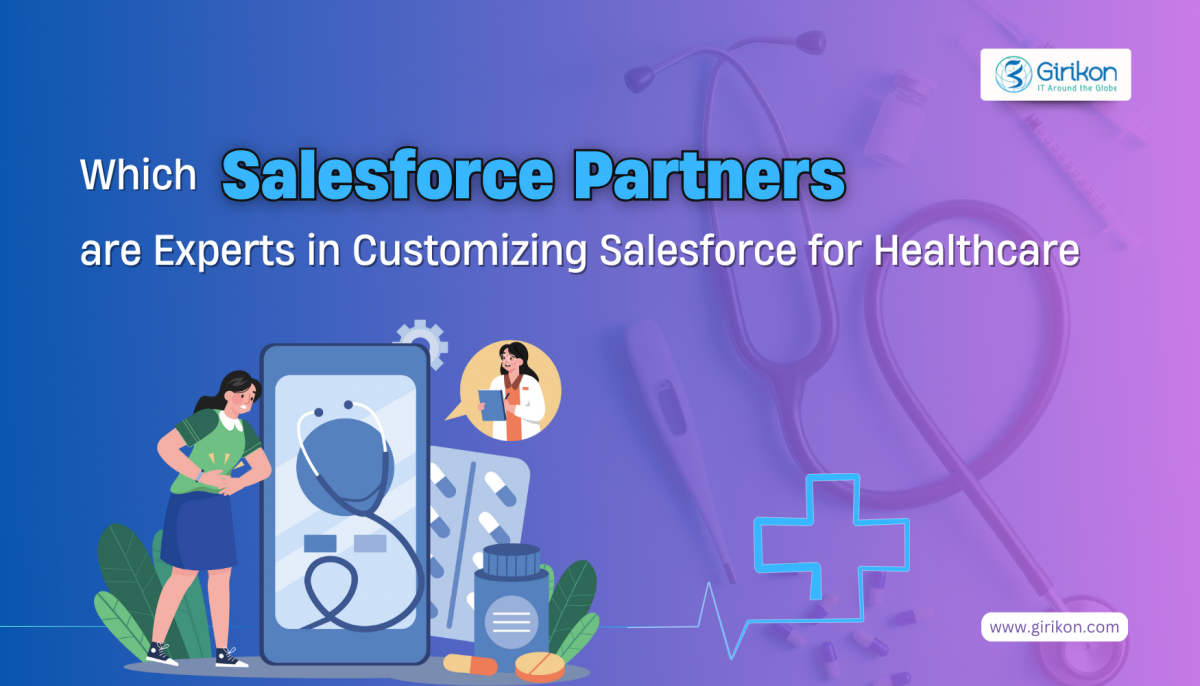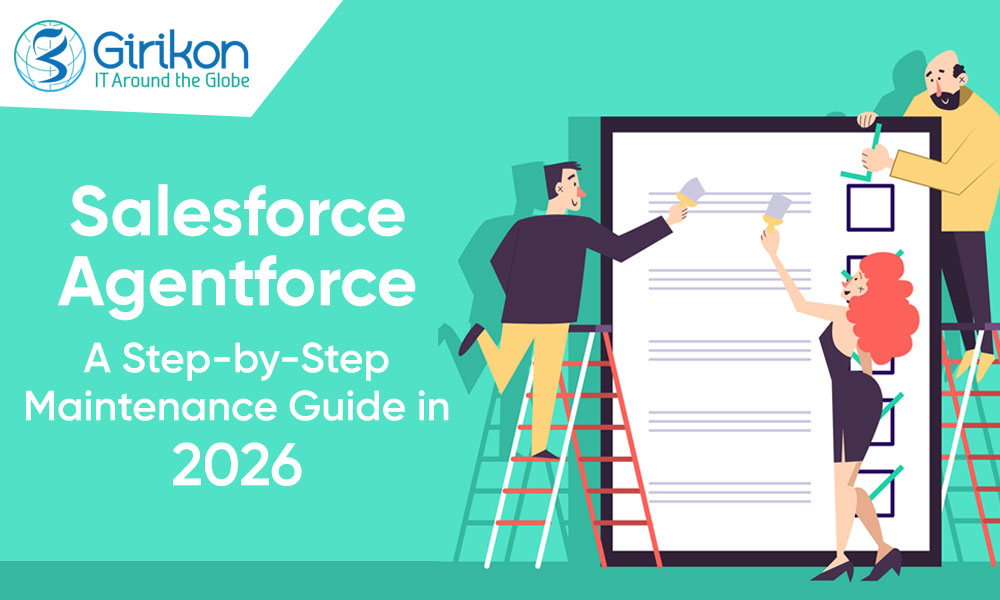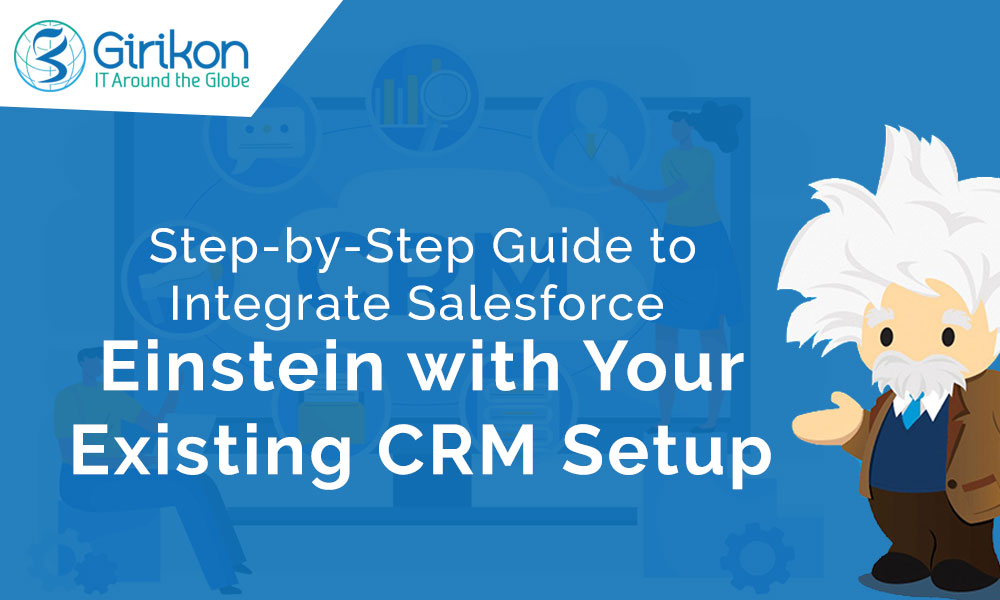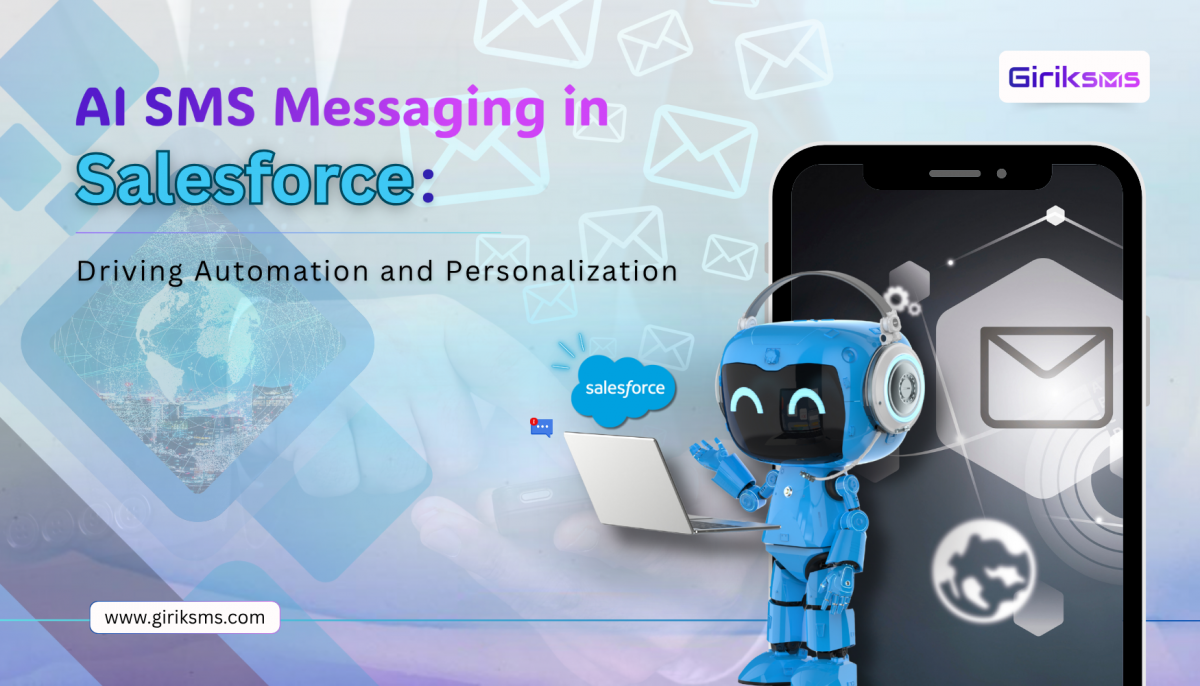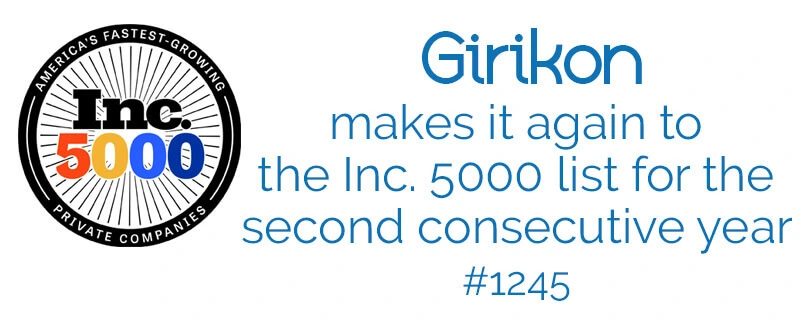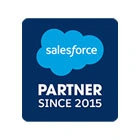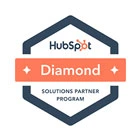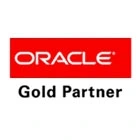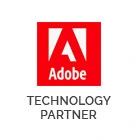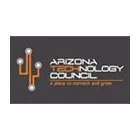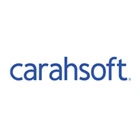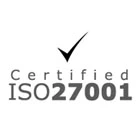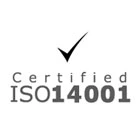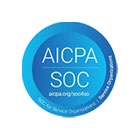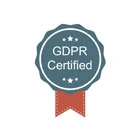Customer service has become the cornerstone of every business and to ensure superior customer service, businesses should leverage the capabilities of a robust CRM platform. One such robust CRM platform is Salesforce, which is a cloud-based platform that assists businesses to streamline workflows while driving digital transformation. However, implementing Salesforce isn’t easy and requires expertise to tailor the platform as per the specific needs of an organization.
That’s where the need for a certified Salesforce Consulting company comes in. These companies are not just service providers but are certified by Salesforce to manage everything from system setup and customization to long-standing training and support. In fact, these professionals have the skill to translate the goals of an organizations into tailored solutions by leveraging the robust capabilities of Salesforce.
What are the Roles and Responsibilities of a Salesforce Implementation Partner?
Before engaging the services of a reliable partner, it’s essential to understand their roles and responsibilities to ensure seamless implementation. A reliable partner helps organizations to create effective strategy for utilizing Salesforce besides setting short-term, as well as long implementation goals. They are also responsible for setting up the system and tailoring it as per the needs of an organization. For ensuring seamless transition and improvement in workflow, a reliable partner will help organizations to integrate Salesforce with their existing systems. They also provide consulting services and end-user training after the accomplishment of implementation.
Factors to Consider Before Shortlisting a Salesforce Partner
Listed below are some crucial points to consider while selecting a Salesforce implementation partner:
Assess Experience and Expertise: It is crucial to look out for partners who have a proven track record of several successful implementations. It’s crucial to verify their experience, as well as expertise of working on projects like yours, their industry knowledge, and the number of certified professionals in their team. It also makes sense to look at client reviews to get insights about their prior performance.
Consider Certifications and Technical Skills: It’s important to ensure that the professionals you have shortlisted to work with are certified and possess the necessary Salesforce certifications. It’s also crucial to assess the technical proficiency through diverse project case studies. This will provide a better understanding of their practical experience.
Evaluate the Cultural Fit of Your Partner: Besides the technology skillset, it’s crucial to evaluate whether the partner in question has the same company vision, language and culture for communication. A partner who shares the same values, culture, vision, and communication approach will accomplish all the tasks while offering valuable insights through the implementation process. This enhances collaboration and contributes to a more successful project outcome.
Scalability: Before zeroing in the right engagement model for Salesforce implementation, organizations need to identify a partner who can provide the flexibility of quickly scaling up or down as their business evolves. Besides having adequate manpower to meet the evolving demands of an organization, they should have the technical prowess to meet those demands.
Ensure Transparency in Budget: While cost is a crucial factor, it’s equally important to focus on the value that a partner delivers. A partner that delivers results and aligns with the goals of an organization is worth the investment. It’s also crucial to ask for a cost breakdown to ensure there are no hidden costs besides getting an idea of market prices by comparing the pricing with other partners.
Training Capability: A good Salesforce partner will offer training and support to secure a strong adoption within your organization. Whether it’s marketing cloud creating educational videos or offering after-training support, this aspect of the Salesforce marketplace is crucial for long-term success.
Benefits of Engaging the Services of a Certified Partner
Listed below are some of the benefits of engaging a certified and trained implementation partner:
Real World Experience: One of the compelling benefits of engaging the services of a Salesforce implementation partner is the real-world experience and in-depth knowledge, which they bring to the table. In fact, they have years of practical experience of implementing Salesforce across various industries.
Customization Abilities: Certified partners understand that one-size fit all approach doesn’t fit with respect to Salesforce implementations. They have the know-how to develop solutions that are tailored to the specific needs of a business, which in turn is crucial for maximizing the benefits of the Salesforce system.
Reduces Employee Downtime: Implementing Salesforce is taxing and time-consuming, which can divert employees from performing their core responsibilities. A certified partner does all the heavy lifting by allowing teams to focus on their everyday tasks. This ensures smooth business operations for organizations.
Long-term Support: Reliable partners do not discontinue their support after the initial set up. Rather they continue to offer ongoing support to help businesses scale their system as their business evolves. Such an association is crucial for maintaining a responsive and agile business model.
Increased ROI: Salesforce Implementation Partners with their in-depth knowledge can restructure the deployment process thereby reducing time for implementation while increasing their return on investment (ROI). With this their chances of costly mistakes are reduced significantly.
Final Words:
A Salesforce implementation partner serves as a strategic resource that enables organizations to optimize the benefits of Salesforce through the successful delivery of Salesforce implementation services while making the most of the benefits that come with it. Therefore, engaging the services of an implementation partner isn’t just a wise decision but also an essential one. Their expertise and ability to tailor solutions besides overall support to minimize the possible challenges while ensuring sustained growth makes them a must have asset for every organization.
It's impossible to imagine life without a smartphone. In today's fast-paced world of 30-minute delivery and queue-less customer service, it is no surprise that businesses are looking at SMS communication to interact with their customers. Text messaging or texting is fast, cost-effective, reliable, has a high read rate of 98%, transcends all geographical boundaries, and is delivered instantly.
SMS texting empowers businesses to communicate with their customers instantly. Not just that. SMS texting allows you to tailor your messages for each and every customer. Translating to an enhanced customer experience.
At Girikon, we recognize that in today’s fiercely competitive landscape, when customers have so many options for products and services, customer satisfaction is a key differentiator. GirikSMS, our Bulk SMS messaging platform, is backed by our decade-long partnership with Salesforce. With GirikSMS, you can re-imagine your customer service strategy and engage customers in a way you have never done before.
What Are the Benefits of the GirikSMS Customer Service Platform?
Customers hate long hold times, delayed responses, and multiple email threads. With GirikSMS, you get a high degree of efficiency and convenience in your customer service.
Easy Opt-in and Opt-out: Before you launch any Bulk SMS campaign, you need to acquire consent from your recipients. With GirikSMS, customers can choose what type of messages they want to receive from your business so that they have complete control over their engagement with your brand. All via texting.
Wide Reach: With GirikSMS Bulk SMS, you can reach thousands of customers instantly. Send relevant messages at the right time to ensure maximum outreach.
Happy Customers: Research says that two-thirds of people prefer texting over calls and email. With GirikSMS, you can communicate with your customers in the way they want to.
Fast Responses: With a high read rate of 98% within 15 minutes, and a 40% response rate, with GirikSMS you can ensure that your messages are seen and acted upon quickly.
Build Relationships: SMS allows you to connect with customers on a personal level. With GirikSMS, your communication can resonate with your brand’s personality.
Automate: With Salesforce SMS integration, GirikSMS can leverage your CRM data and workflows to automate outbound Salesforce text messaging and record responses in your CRM.
Cost-Effective: Bulk SMS from GirikSMS is far more cost-effective compared to traditional marketing methods. With competitive pricing and the ability to reach a large audience instantly, GirikSMS significantly improves the return on investment for businesses.
Personalization: GirikSMS can be integrated with your Salesforce CRM, which means you can personalize every message based on customer data and their needs and preferences. Personalization helps you to build stronger relationships with your customers.
Code-less implementation: GirikSMS comes with an intuitive point-and-click interface, so you can launch your first SMS campaign in minutes.
Here are some of the ways in which GirikSMS can optimize customer service for your business:
Run Customer Feedback Campaigns
Customer feedback is vital to know their interest and confidence in your brand. It helps businesses to re-imagine their strategies to strengthen customer relationships. With GirikSMS you can easily launch campaigns to solicit their feedback, log their satisfaction levels, and learn about their interests and preferences. With GirikSMS, you can also create multi-optional polls to collect their feedback on a particular product or service they purchased from you.
Make Your Customers Feel That You Value Them
With GirikSMS, you can leverage your CRM data to send timely updates, like order confirmations, shipment tracking notifications, appointment reminders, instructional messages, and links to videos and articles to use your product and more. With GirikSMS, you can keep your customers informed and engaged throughout the product or service lifecycle. With personalized messaging and seeking their feedback, you demonstrate that you value their input and are committed to continuously improving your offerings.
Offers and Promotions
With GirikSMS, businesses can send tailored offers, discounts, or promotional codes to thousands of customers instantly. And all of this can be automated and personalized within your CRM. With GirikSMS you can always keep your customers engaged, drive sales, and build loyalty and confidence in your brand.
Automate Customer Support
Industry data indicates that almost 80% of customer support queries are routine cases. With GirikSMS AI-powered Chatbots, you can automate responses to these queries to deliver instant resolution to common concerns and free up agent time to focus on more complex customer issues. If the Chatbot cannot resolve the customer's concern after the exchange of a few messages, it can automatically route the conversation to the right agent. Not only does this allow you to scale your customer service operations quickly, but also builds customer confidence with quick resolution to their concerns.
Send Digital Receipts
In today’s paperless era, with GirikSMS, businesses can send digital receipts for every transaction via SMS. Digital receipts are fast, secure, and cost-effective. And these transaction receipts can always be coupled with discount codes so that customers keep coming back for more.
Best Practices for Bulk SMS Services:
Before launching a Bulk SMS campaign, it is important to look at a few pointers to ensure you are doing the right things the right way.
Obtain consent: Acquire the recipient's consent before sending bulk SMS messages. Consent-based customer service ensures compliance and maintains a positive brand image.
Targeted Messaging: If you are a Salesforce customer, you have likely segmented your customers based on demographics, interests, preferences, and purchase history. GirikSMS can leverage this customer segmentation data to send relevant and tailored messages. This improves the efficacy of communication and improves customer engagement.
Clear and Concise Content: SMS messages have a character limit. It is therefore important for your message to be clear and to the point. With GirikSMS, you can easily create templates based on business cases and send concise, tailored messages to deliver the intended information effectively.
Timing: Send your Bulk SMS messages at a time when they are most likely to be read within minutes. With GirikSMS you can schedule outbound Bulk SMS messages based on your audience location and time zone to maximize the likelihood of them being read quickly.
Test and Analyze: While Bulk SMS can be a very effective customer service and marketing tool, it is equally important to continuously track and analyze the performance of your campaigns. GirikSMS makes that possible. With GirikSMS you can easily track open rates, click-through rates, and conversions to refine your communication strategy and improve results.
Businesses of all sizes recognize that exceptional customer service holds the key to stability and growth. Customer service directly impacts brand value, customer loyalty, and sales. And with integration with Salesforce, GirikSMS-powered SMS from Salesforce gives you an invaluable tool to quickly scale up customer service and deliver enhanced customer service experiences.
Start a Free 14-day Trial Today.
In today’s increasingly connected world, data is the point on which the entire business world pivots. We are generating unimaginable amounts of data every day. And locked within these humongous stores of data are the insights that businesses can use to better understand themselves and more importantly their customers.
To remain competitive, businesses need to do more than just collect data. They need to be able to capture and analyse that data and convert it into actionable insights in real time to succeed.
Enter Salesforce Einstein Analytics
Here are 40 reasons why Einstein Analytics is the no. 1 choice when it comes to data analytics for your business.
Hit the Ground Running.
Work with a someone you can trust: Enjoy peace of mind knowing that you are working with the world’s no 1 CRM platform.
Cust Costs: Reduce operating costs by using a pay as you use cloud-based analytics platform. Say goodbye to expensive installation or maintenance costs, and onsite hardware.
Get going quickly: Leverage powerful analytics within minutes, thanks to out of the box solutions.
Cut out the fluff: Pay only for the features you use. Salesforce Einstein Analytics comes with flexible usage models, so you always have the tools you need, at a price that suits your budget.
Customise your solution: Salesforce Einstein Analytics is fully customisable and can be easily tailored for your business. With Einstein Analytics, you can set up the solution that works best for you.
Built-in support: Salesforce Einstein Analytics comes with comprehensive guides, tutorials, videos, and multiple support options across channels.
Integrate your data: No need to depend on your IT teams to upgrade your software for data analysis. Einstein Analytics seamlessly integrates analytics tools with every application and system, giving you a coherent, integrated, easy-to-use solution that gives you faster results.
Connect Across Departments.
Integrate seamlessly with the entire Salesforce platform: Salesforce Einstein Analytics integrates perfectly with all Salesforce products such as Sales Cloud, Service Cloud, Marketing Cloud etc giving every user easy access to unified customer data.
Collaborate: Collaborate across sales, service, marketing, and other teams with cloud-based data analytics that can be accessed from anywhere across any device.
Unify your goals: Give your teams a unified vision and objectives they can strive for, with data that is insightful, reliable, and actionable.
Generate stunning visuals: Use built-in tools to convert data into stunning insightful reports and dashboards for presentations.
Get conversational: Leverage social media technology to enhance team communication, with Chatter for Einstein Analytics.
Put it in context: Get consistent views across departments with embedded reports and dashboards.
Be available always: Work on your data over any device, from anywhere on the planet.
Analyse Your Business.
Monitor team performance: Leverage real-time reports to view team performance and identify trouble areas early and optimize.
Access KPIs: Discover key performance indicators across your organisation to ensure you do not deviate from the path of success.
Track call-center efficiency: See customer support trends across channels right on your dashboard and make informed decisions to enhance the customer service experience.
Empower teams to self analyse: Give your teams the power to measure their own performance and set new performance benchmarks.
Find the Key to Sales Success.
See the big picture: Explore all data in a unified dashboard. Get a 360 degree snapshot of the health of your business.
Eliminate borders: Get a unified view of your business across geographies, products, customer segments and time periods, for a true picture of how your business is performing.
Predict the future: View historical trends to intelligently forecast which strategies are most likely to work and which leads are the most promising.
Reduce customer churn: Get detailed insights into each and every customer, deliver personalised customer experiences and ensure customer loyalty and retention.
Prioritise leads: Analyse your leads to assess the likelihood of their conversion and focus on the most promising ones.
Evaluate your lead sources: Discover which sources are the most productive, so you can focus your efforts where it pays off the most.
Enhance the customer experience: Resolve issues and monitor customer satisfaction directly from within Salesforce, and optimise.
Market Smarter.
Dive deeper: Go deep into your marketing data and get a detailed analysis of funnels, campaigns, conversion rates and more across channels.
Present the right message: Create messaging to attract your target audience, and get valuable insight into that audience.
Be your own data analyst: Marketing data analysis is too precious to hand over to someone else. With easy-to-use tools and visually compelling reports, become your own marketing analyst.
Take instant action: Act in real time with up-to-the-minute marketing data from unified dashboards.
Specialize in B2B marketing: Leverage the power of unique and effective B2B marketing tools in Salesforce to stay ahead of the competition.
Understand the brand experience: Analyze data to see what your customers see, and optimize the customer experience.
Optimise Service.
Set your priorities: Prioritise open cases with service manager, and give your teams a clear view of customers that need their attention.
Evaluate your accounts: Identify accounts with the highest number of cases and highest opportunity.
Connect with your agents: Get a complete view of agents and their cases, and assign notifications based on configurable conditions.
Review your service backlog: Compare data and identify service trends over time to assess how service levels compare across years.
Revolutionise Analytics for Your Organization.
Integrate with third-party apps: Leverage advanced integration options for any third-party application and extend your analytics beyond Salesforce.
Optimise your pipelines: Leverage data-driven strategies to manage your pipelines.
Automate analysis: Salesforce Einstein AI is designed to automatically analyse millions of data combinations for informed actions.
Data security: Share data across devices securely using the cloud platform security services trusted by over 150,000 businesses worldwide.
Push the limits: Extend your analytics abilities with custom-made apps or find the right ready-made app for your specific analytics needs on the Salesforce AppExchange.
Everyday, we are producing mind-bogglingly huge amounts of data. Businesses need to use that data as a foundation for data analytics, to understand themselves and their customer better, to drive enhanced customer experiences.
Girikon is a Salesforce Consulting Company and has helped businesses across the globe achieve success on the Customer 360 platform. To know more about how you can turn your data into intelligent actionable insights with Salesforce Einstein Analytics, contact us today.
Powered by an extensive Salesforce Consulting Partner network, Salesforce provides access to expertise and solutions tailored for the automotive industry with their latest offering – Automotive Cloud.
Automotive Cloud is a product created specifically for automotive manufacturers, supply chain partners, dealers, automotive finance companies, and their customers. Automotive Cloud empowers businesses to deliver exceptional customer service experiences across every interaction with Driver 360, boosts top lines with better lead conversion and improved collaboration, and leverages industry best practices based automation and real-time analytics for greater productivity and RoI.
The automotive industry is going through a huge transformation as it gears up to meet the demands of today’s digital first world. Salesforce research indicates that only 1% of automotive customers had a delightful car buying experience, and only 25% auto manufacturers and dealers believe their business has adapted well to online commerce. To create new revenue channels and fix the fragmented customer experience, the automotive industry must recognize new opportunities with new selling and service models, connected and intelligent vehicles, subscriptions models, partnerships, and the heaps of data these new offerings generate.
With the rise in direct to consumer models and the surge in the adoption of electric vehicles, the automotive industry is in the midst of a new digital imperative. Automakers today recognize that with disruption comes opportunity, and businesses embracing the digital-first future with a technology platform like Automotive Cloud can have a competitive edge going into the future.
According to Salesforce, over 90% of automotive industry leaders recognize that first-party data can help significantly improve the customer experience across every interaction – like vehicle browsing, purchasing, financing, or service.
Automotive Cloud, powered by Driver 360, and built on automated, intelligent and real-time technology, delivers a unified view of the customer and vehicle lifecycle for auto manufacturers, supply chain partners, dealers, and finance agencies.
Just like Education 360 for learning and Patient 360 for healthcare, Driver 360 is built on the powerful Customer 360 platform and delivers a single source of truth for the entire automotive industry.
Whether consumers are surfing for a new car, completing a purchase, looking for vehicle financing, or want to get their vehicle serviced, Automotive Cloud is poised to drive the automotive industry through this phase of unprecedented transformation by enabling real-time intelligent personalization across the entire journey of the vehicle. With Automotive Cloud, marketers can configure ranking parameters to qualify leads to share the leads most likely to convert with the customer’s local dealer. Dealer managers can track the performance of their inventory to discover how dealers are performing to improve how they manage their inventory and vehicle allocation. Service teams can configure alerts to notify them when a service is due. And IT teams can build custom workflows with just a few clicks to automatically alert customers in case of a vehicle recall of a particular model.
Driver 360 empowers you to deliver best-in-class customer experiences
Driver 360 comes pre-built with industry specific best practices based on out-of-the-box solutions built on verified data models for the auto industry to fast track time to value.
With Driver Console, service teams can get a comprehensive view of all customer interactions and alerts across every touchpoint throughout the customer and vehicle journey, including car browsing, purchasing to vehicle servicing. With the Household Management feature, automotive businesses can aggregate their data to build a 360 degree picture of a household’s vehicle ownership and past interactions, which the dealers and other partners can use to offer personalize support and offers.
With Vehicle Console, staff across automakers, dealers and finance agencies can get easy access to holistic vehicle information like odometer readings, current market value of the vehicle and real-time service and repair information. Automotive Data Foundation, which has been built on industry standards, is the cornerstone of Automotive Cloud. It creates a trusted data foundation that allows for interoperability, compliances, data protection and data sharing.
Drive revenue through better lead conversion and communication
Today’s customers prefer digital first engagement. Which means automotive businesses, dealers and partners need to collaborate seamlessly to drive sales, manage inventory, and deliver enhanced customer experiences.
Automotive Lead Management encourages collaboration right across the value chain that includes automotive manufacturers and dealers. It enriches leads by providing comprehensive customer and vehicle history, enabling users to direct the high priority leads directly to the customer’s preferred dealer coupled with comprehensive information about their preferences, needs, and interaction history.
Dealership performance can be easily analysed by region and lead pipelines can be monitored better with Dealer Performance Management. This enables auto businesses to focus their efforts and facilitate better coordination across sales agreements, customer visits, partner affiliations, forecasts, incentives, and much more.
Powerful AI and analytics for increased productivity and cost savings with industry-specific automation,
With rising prices of raw material and parts, supply chain limitations, and huge investments in EVs, automotive businesses need smart automation, AI, intelligent analytics based on seamlessly connected data to lower costs, identify new streams of revenue and empower users to make better informed decisions.
Flow for Automotive Cloud allows users to build and deploy intelligent workflow automation with just a few clicks. Flow’s integration and configuration capability makes it easy to create and deploy branded automation experiences like order status updates or delay notifications to enable users to accomplish more tasks with lesser resources, improve efficiency, and deliver enhanced customer experiences at scale.
With Analytics for Automotive Cloud, automakers can get deep insights to track and improve business performance. Analytics comes with purpose-built dashboards and views that give business users a detailed snapshot of business performance, customer and vehicle lifecycle, and trends, to yield faster and better business outcomes.
With Salesforce Genie, automotive businesses can unify complete customer and vehicle data across multiple channels across all interactions by aggregating vehicle, service and interaction data into a unified, real-time, customer profile.
With Automotive Cloud you can deliver unified purchase and service experiences. It empowers you to automate processes, get intelligent insights. Now you can transform customer insights into real time, rich, seamless experiences.
Get an enriched view of your customers, households, vehicles, and assets to enable real-time, purposeful engagements.
Automate business processes easily with just a few clicks.
Simplify integrations across automakers, partners and collaborators and deliver branded experiences with just a few clicks with Flow for Automotive Cloud.
Get intelligent insights and make better informed decisions.
Customer facing teams can use the power of AI to engage smartly with customers across every touchpoint.
Drive real-time, engaging experiences.
Drive sales and service. Delight customers throughout the entire sales and service journey with a solution purpose built for the automotive industry.
Here’s what you get with Automotive Cloud to power customer engagement.
Driver Console
Get a 360-degree view of all customer interactions and easily configure custom alerts for your teams.
Vehicle Console
Access important information such as vehicle details, warranties, or service reports.
Household Management
View complete history of a household’s owners and vehicles to deliver personalised support and offers.
Automotive Lead Management
Forward high-priority leads directly to the customer’s preferred dealer.
Partner Performance Management
Easily track performance of partners and seamlessly collaborate on site visits, incentives, and more.
Automotive Data Foundation
Ensure data protection, compliances, and data sharing.
As a Salesforce Consultant, Girikon recognizes that Automotive Cloud comes with limitless possibilities to enable automotive companies make their business future proof. To know more about how you can leverage AI, Automation and Analytics to significantly improve decision making, drive efficiency and boost revenues for your automotive business, contact one of our experts today.
The latest Summer '23 features have been released by Salesforce. If you are looking to upgrade your Salesforce instance, the right Salesforce Implementation Partner can help you with the implementation of these new features and training of your Salesforce admins to make your operations more efficient and productive.
Here’s a look at the top 10 features from the Latest Salesforce Summer ’23 Release
1. Integrated Analytics Services
The summer ’23 release comes with a consolidated interface for Analytics and Slack. Which means you can now enjoy a seamless engagement with all your CRM Analytics, Lightning reports and dashboards, and Einstein Discovery models and forecasts. The Analytics tab now comes with powerful search capabilities and recommendations, giving you access to organized statistics that you can turn to for all your Lightning dashboards and CRM Analytics.
Using the Post to Slack feature on Lightning dashboards, you can share information such as dashboards and CRM data with colleagues throughout Slack workspaces easily.
2. Unified Analytics
With the new release of Analytics Home, you no longer need to deal with analytics spread over different products. This new feature unifies all your CRM analytics data in a single place, allowing you easy access to information. Now you can get access to a consolidated view of all your CRM reports and dashboards in a structured and organised way, so you can easily access all the information you need to take quick decisions.
3. Customer Data Platform reimagined as Data Cloud
In the new release, Salesforce has transformed the erstwhile Customer Data Platform into Salesforce Data Cloud with all the necessary documentation and additional features.
4. Barring Unverified Emails Sent by Guest Users
This feature update disallows companies from sending emails from unverified email addresses of guest users. However, Salesforce customers that have a validated company-wide email address will not be impacted by this update. In such cases, the sender’s email address always updates to the authenticated email address. With the Latest Summer ’23 release, this enforced change effectively disallows shadowy emails from being sent by a guest user using an unverified email address.
5. Upgrade to Hyperforce Using Hyperforce Assistant
The latest Summer ’23 release comes with Hyperforce Assistant which streamlines the upgrade to Hyperforce. The new Hyperforce Assistant comes with the latest Hyperforce messaging authorization feature that has better in-built reference checks to support Salesforce organizations that have a large number of Apex classes. Hyperforce Assistant is available in all editions of Salesforce Lightning as well as Classic.
Once admins schedule the upgrade, they will be asked to initiate the assistant. Admins can activate the assistant manually in case you are scheduled for a major migration. During Setup, you can enter “Hyperforce Assistant” in the Quick Find Box and select the appropriate option.
6. Accelerated Quote Template Creation With OmniStudio Document Generation
Quote generation is now much simpler with this latest add on. With Salesforce CPQ Plus, your reps can easily create templates to generate quotes for your customers. You can generate a Microsoft Word file in the format and language of your preference, insert tokens and upload the document. Then associate the inserted tokens with relevant Salesforce fields. Your sales reps can then start utilizing the template once it is active. They can also easily convert their documents to PDFs. This Salesforce CPQ plus update is available in both Salesforce Classic and Lightning Experience.
7. Real-Time Collaboration with Partner Relationship Management for Slack App
This feature improves communication and collaboration across internal teams and external partners by bringing them together in a single channel using Slack. With Slack you can automate key business processes, and update and share records easily across collaborators. Partner Relationship Management for Slack connects your Salesforce CRM with partners seamlessly, with easy access to important information through partner portals, thereby boosting productivity, and fostering better communication. This upgrade impacts the Enterprise and Unlimited editions of Salesforce. The mandatory requirement to access this feature upgrade is to be a Slack Enterprise Grid user.
8. Codeless flow of External Data into Flow Builder
This new feature allows admins to use Flow Builder to automate processes that involve external data without the need for coding by developing an HTTP callout action through a web service API. Once you enter the API details, Flow Builder automatically generates a reusable callout action which admins can immediately deploy in Flow Builder and across Salesforce. This commonly used feature has witnessed several enhancements since the last update. Now it is easier to configure and edit the API responses to HTTP callouts. This allows the use of external data inflows to be simpler and more declarative. This upgrade is available across all editions of the Lightning Experience – Enterprise, Performance, Unlimited and Developer.
The reason why this feature has been introduced is that APIs often go through modifications, such as the addition of a new field or updation in an existing field in an external system. Admins with the relevant permissions in Manage Flow and Customize Applications can create an HTTP callout action.
Previously, admins had to modify the auto-generated API definition in JSON to modify the HTTP callout action. With the latest update, this action can be modified with just a few clicks. Instead of editing and configuring JSON to parse the API response, admins can easily select data types for fields. With this new feature, admins will also receive more lucid error messages, simplifying the troubleshooting process and prevent runtime issues.
9. Quick Create Sandbox to Enhance Productivity
Quick Create Full Sandbox is another new upcoming feature of the Salesforce’s Summer 23 Release. This feature accelerates sandbox creation and refreshing. This update means no additional actions will be required from Salesforce admins as it is the default setting. This feature will be available on eligible Hyperforce instances. Salesforce will initiate a staggered release after June 10, 2023, and users with the Manage Sandbox permission can use this feature.
10. Process Builder is on its way out.
Rules have changed. Process Builder does not have the capability of adding new processes anymore. However, you can still activate/deactivate existing processes or edit them. Having said that, it is recommended that for most use cases, you migrate to Flow Builder. The upgraded flow builder can take automation of business processes to a whole new level.
Summing Up
With the Summer ’23 release, Salesforce endeavours to make your daily tasks simpler, more efficient, and productive. The Summer ’23 release is designed to empower organizations to improve their engagement with customers, automate businesses processes, and drive growth.
At Girikon, a Gold Salesforce Consulting Partner, we recognize that staying up-to-date with these new changes in the Salesforce platform and leveraging the new capabilities are key to maximizing your Salesforce RoI. Contact one of our experts today to know more about how you can make the most of these exciting new features of the Summer ’23 Release.
When Salesforce acquired Vlocity in 2020, it acquired the capability to sync its core platform with industry-specific solutions & processes. This tailoring of its cloud offering addresses industry specific business needs as well as legal and regulatory needs of companies. Salesforce Industries also offers enhanced data models to serve various industries such as Financial Services, Government, Health, Government, Manufacturing, FMCG, Energy & Utilities, Communications and Media & Entertainment.
More often than not, architects find themselves working on a project with industry-specific requirements. And they need out-of-the-box capabilities from the Salesforce Platform.
What is Salesforce OmniStudio?
Salesforce OmniStudio is powerful suite of 4 core task-based components. They are:
OmniScript
DataRaptor
Integration Procedure
FlexCards
These components empower architects to consolidate applications, quickly bring up new users to productivity, and lower overall costs-to-serve. Salesforce OmniStudio is available as a complete native managed package that can add additional functionality to your existing Salesforce instance.
Data model
Salesforce Industries comes with industry-specific data models, as a layer on top of the Salesforce object model. The data model is completely additive. It is designed to enhance standard objects and fields or allow addition of new custom objects and fields. In other words, there is no duplication of any existing entity.
OmniScript
Architects across the world prefer tailored solutions to simplify maintenance and operations of systems. If you wish to deliver engaging digital experiences which can seamlessly integrate into your website, then OmniScript will help you get the best out of your engagements. With OmniScript you can easily deal with industry-specific cases.
OmniScript enhances interactions by offering tools that are user-friendly can be tailored to deliver additional value to end-users. Also, it offers a code-less environment since it comes with ready-made aspects which can be deployed easily across channels and devices.
Functionalities of OmniScript:
It allows you to easily compose interactive processes for every use case, and allows you to branch easily.
OmniStudio comes with a drag-and-drop OmniScript editor feature. Architects can use this feature to proof-read their work. There are also in-built troubleshooting tools to fix the processes.
Device and channel agnostic. Users can access it from anywhere – whether mobile or web. If you are using a mobile app, you can use the OmniOut function to install Lightning Web Components (LWC) OmniScripts for these systems.
It allows for easy prototyping of user experiences enabling reuse without any challenges by distinguishing between the JSON metadata structure, the data, and the templates.
Allows easy generation of LWCs which can then be used in the Lightning App Builder.
DataRaptor
DataRaptor is a user friendly mapping tool. It allows architects to efficiently extract, store, and access data. DataRaptor allows easy configuration for negotiating any data. With DataRaptor, architects can easily extract, load and transform data conveniently.
There are main 3 components in DataRaptor are:
DataRaptor Extract – It allows you to retrieve data from Salesforce. With DataRaptor Turbo Extract, you can restore data from a single Salesforce source
DataRaptor Load – It allows you to save data
DataRaptor Transform – As the name suggests, it allows you to transform data
DataRaptor acts a connecting bridge between Salesforces and OmniScript/ FlexCard. It loads data from Salesforce and sends it to these sources and sends updated data from these back into Salesforce. It can auto-generate Apex REST web services to work seamlessly with external applications.
Integration Procedure
Integration Procedure is a declarative process that allows you to generate multiple actions with a single hit. It reads data from Salesforce and writes data back to it. With integration procedure, you can also do the same with external systems through REST calls. Integration procedure also allows you to execute Apex code without any user interaction.
These are the features of Integration Procedure:
Executes functions across multiple data sources such as Salesforce, external systems.
Can serve as a data source for OmniScript, FlexCard, REST or Apex.
Trims data that is served to the browser from the server reducing data transfer traffic.
Process huge amounts of data easily.
Allows you to easily load and transform data from third-party sources without any user interaction.
Works with clicks not code, which allows for easy integration and configuration.
Automatically creates REST endpoints to work seamlessly with external systems.
Works seamlessly with Declarative Platform Cache configuration that improves performance and reduces server processing at scale.
FlexCards
FlexCards is an integral part of Salesforce Industries. FlexCards allows you to create industry-specific UI components catering to specific customer needs. FlexCards uses the LWC framework and allows for easy deployment options via Community Builder and App Builder.
FlexCards acts as a data source for DataRaptor, Integration Procedure, REST, Apex etc. When using FlexCards, only data that is relevant to the user is thrown up based on the configuration.
The features of FlexCards are:
Displays consolidated, concise, and relevant information.
Allows for contextual actions to improve collaboration across business operations
Can be tailored to customer preferences across channels and devices
Can access and assess data from Salesforce and external applications
Has an intuitive code-less declarative editor
Auto-creates Lightning Web Components
Advantages of Omnistudio.
Accelerate innovation with declarative tools that empower you to go digital quickly.
Easily deploy industry-specific processes fast to automate interactions
Simplify integrations with drag-and-drop functionality with a modular, granular-service oriented approach
Build tailored flexible, scalable and branded user interfaces with an intuitive code-less configuration
Automate the customer service experience easily with just a few clicks
Make your business agile with scalable digital engagements.
Create code-less, guided user experiences
Allow your users to accomplish complex tasks effortlessly with a flexible, scalable, branded user interface. Easily help them navigate through sales and service processes with quick and personalized responses. Seamlessly integrate with your Salesforce CRM and external systems.
Integrate with external data easily.
Use declarative data mapping and REST interfaces to manage complex data structures fast with a drag-and-drop intuitive interface. Connect with external systems to seamlessly bring in data into the tailored, branded experiences created using OmniScript and FlexCards
Empower agents with contextual information
Streamline and optimize your processes by showing only the data you need, when you need it. Construct guided user interfaces with clicks, not code. Quickly get data into FlexCards from multiple sources.
OmniStudio gives you the tools to accelerate value realization.
Interaction Console
Get easy access to dashboard components that give you a 360 degree view of the entire customer journey and offer insights to help resolve issues faster.
IDX Workbench
Easily migrate changes and manage cross organizational dependencies and simplify DevOps. Visualize and compare changes across versions in a desktop app. Easily switch components across source control, sandboxes, and production.
Omni Analytics
Visualize data to understand process performance and identify trends. Take actions to improve core metrics and KPIs.
Project Explorer
Structure industry processes by organizing metadata into collections that can be accessed from anywhere in the org. Search and navigate easily across items.
At Girikon, a Salesforce Implementation Partner, we recognize the promise that Salesforce Industries and OmniStudio bring for architects. And with Salesforce’s commitment to continued enhancement, it promises enduring productivity and innovation for architects. Contact us today to learn more.
In today’s pandemic context, businesses around the world have embraced digital transformation to re-imagine their internal processes. In partnership with global Salesforce Consultants, the Customer 360 platform has helped organizations witness exponential growth in lead conversion and customer satisfaction scores. And with digital transformation, there has been growing need to make the platform available to field services. And that led to the birth of Salesforce Field Service Lightning.
Salesforce Field Service is a solution that extends the power and flexibility of the Salesforce platform to field service operations. Multiple teams across geographies can be easily connected to everyday field service tasks that require site visits in real time.
What Is Salesforce Field Service Lightning?
Salesforce Field Service Lightning is Salesforce’s new offering as part of its Customer-360 platform to augment the customer experience through field services. One of the hallmarks of Salesforce CRM is the 360-degree insight on customers. With Field Service Lightning, customer information percolates downstream to the field service agents. Along with that, Salesforce also provides a Field Service learning map, a handy resource to guide you on your path to Field Service success.
Let’s dive deeper into the key functions of Salesforce Field Service Lightning to understand why it’s useful for businesses.
Task Assignment
This is perhaps the most attractive feature of Salesforce Field Service Lightning. With this function, you can quickly create tasks for your field service agents and track the tasks assigned in real time. Standard activities such as appointments, maintenance tasks and other field activities can be easily managed by the field agents and technicians.
And because of the fully integrated capability of the Salesforce platform, Field Service Lightning comes integrated with contacts, accounts, cases, and other items. You can get access to knowledge articles and real time tracking of SLA compliance with relevant milestone tracking or visit resolution.
Service and Resource Allocation
Field Service also allows you to automatically customise and assign tasks as per company guidelines. And not just that, it also allows you to book appointments easily based on customer data and tailor the relevant tool for a particular task based on capacity, location, and business rules. Customers can also auto-book an appointment conveniently.
Real Time Inventory
Using the Field Service mobile app, you can view the assets installed at client locations using the barcode scan function. You can scan team barcodes and update the inventory available with a particular truck. This allows the field technician to easily manage the tools inventory and materials that is being transported to the customer.
The required field service tasks can be associated with both the inventory required for the task as well as the skills required to complete them. You can configure multiple storage locations for materials and tools which could be fixed locations such as warehouses as well as mobile inventory such as trucks or backpacks.
Dispatcher Console
You can easily assign tasks and link it to the right agent based on multiple criteria such as work location, required knowledge to accomplish the task, agent availability, and much more.
The dispatcher can get a complete view of all scheduled appointments, their stratus updates, with alerts for issues that require urgent intervention. The field service map shows you the status of the service task in real time, showing the current location of the both the technician as well as the client. With this feature, tracking and management of field technicians becomes more efficient.
Field Service App
Using the Field Service Mobile app, the field technicians can view the list of pending tasks for the day in real time. Tasks can be viewed in 2 ways: a sequential list for the day ahead or a map that shows the route to follow. Technicians can also fill in the necessary information required to complete the task. The app also provides relevant guidance to the technician to ensure that the necessary steps are followed to confirm the appointment, making their job easier.
Field Service Lightning comes integrated with Chatter. This allows field technicians to share updates with other technicians or the dispatcher in real time. Customers can sign on the app itself and technicians can create service reports by having a digital document about the job.
The app also works seamlessly in offline mode, which may be necessary in remote areas. In offline mode, all Field Service functions are available in the app. This allows technicians to complete tasks in areas where there is limited or no mobile service. Technicians no longer have to be limited by circumstances and can deliver great customer service everywhere.
Data Analysis
Salesforce has set a gold standard when it comes to data analysis and Field Service Lightning is no different. In Field Service, you can easily perform data analysis on the go with just a few taps. You can create comprehensive custom views of technicians, supervisors, and third party contractors. Salesforce Field Service Lightning allows you to easily integrate all data from multiple systems making service and its supervision possible.
4 Advantages of Salesforce Field Service Lightning
Salesforce Field Service Lightning integrates seamlessly with tools of the Salesforce ecosystem such as Service Cloud to deliver greater efficiency and productivity.
Shift Management
Organizing field service teams in shifts and complex trip management is a thing of the past. Salesforce Field Service Lightning is built on an object model that allows for improved and easy management of these processes. Supervisors and managers can easily manage resources and shifts and relieve administrators of unnecessary heavy lifting of mundane tasks.
Dependencies
Linking tasks can now be done easily with Field Service Lightning. More often than not, tasks have dependences and its critical to correlate them to maintain service levels. This is particularly helpful in scenarios where a particular work order has multiple tasks that must be completed.
Service Groups
This allows field service agents to work as a collaborative team for easier planning and execution of field service tasks. This brings in fluidity to the entire service operations.
More often than not, field service teams work under the assumption that everyone has similar skills, which limits a work order to be able to allocate resources using a combination of skills. For instance, if you need a carpenter and a plumber, they should be assigned to different service appointments with the same start dependencies amongst them. This feature comes in handy for certain scenarios such as professional services or complex engineering.
Salesforce is committed to continue its technology innovation to bring value to its customers, their employees and partners across industries. Field Service offers a significant improvement for your business, covering all your task and logistic management needs and ensures that your field service agents can spend most of their time on what they do best and not in mundane, repetitive tasks.
At Girikon, a Gold Salesforce Partner, we offer consulting, implementation, and training across the entire spectrum of Salesforce products. To know more about how Salesforce Field Service Lightning can significantly improve the efficiency of your field service operations, contact us today.

 +1-480-382-1320
+1-480-382-1320 +44-7428758945
+44-7428758945 +61-1300-332-888
+61-1300-332-888 +91 9811400594
+91 9811400594